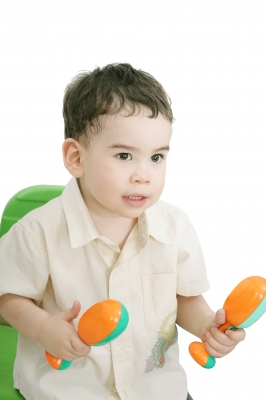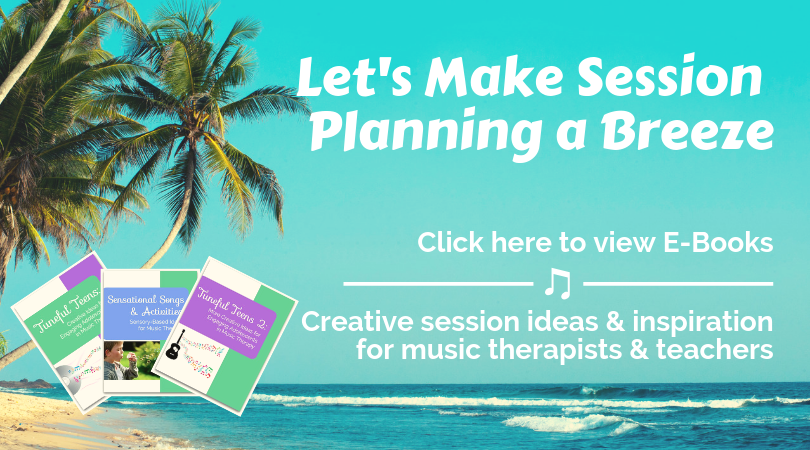
I’ve been working at Children’s Resources Educational Center since August of last year and am loving my time there.
I have the opportunity to work with a wonderful group of students. One of my favorite classes at Children’s Resources is for children with severe/profound intellectual disability and physical disabilities.
Many of the students in the class need hand-over-hand assistance to participate during music therapy, especially when we play rhythm instruments.
I use rhythm instruments often (shakers, bells, rhythm sticks, etc.) because they are multisensory and provide multiple opportunities to work on gross and fine motor skills.
Since I use instrument playing activities so often, I want to share one technique I love to use to liven up these experiences:
Solos.
Here’s how it works.
- Each client chooses a rhythm instrument to play.
- I accompany them by singing and using auto accompaniment on keyboard to give an added musical boost (find out how you can do this on your keyboard by watching this video).
- After singing and playing through the chorus, I then give each client the opportunity to have a solo on their instrument. The auto accompaniment feature is fantastic because it usually has a “fill” that will lead into another type of accompaniment pattern during the solos. This helps musically distinguish between the chorus when everyone plays and the verse when each client plays individually.
- After each client has had the opportunity to solo on their instrument, we go back to the chorus and everyone plays together until the end.
It’s a simple technique, but here are the benefits:
- You can be certain each client will have an opportunity to play. Clients with severe/profound disabilities and/or physical disabilities may not be able to play the instrument independently and there may not be enough “helping hands” (i.e. support staff) to assist. During the solos, a staff member can move around the group to provide hand-over-hand assistance to each client and ensure they have an opportunity to play.
- You can be certain your motor objectives will be addressed. Most of the clients I work with who have a physical disability are working on improving their gross and fine motor skills. Solos ensure that each client will have the opportunity to play their instrument, thus working on skills like grasping, full extension of the arms and bringing arms to midline.
- Clients can work on impulse control. This may or may not be a priority need for the clients you work with, but it’s certainly something they’ll have the chance practice as they wait for their turn to play.
Solos are so much fun! That paired with a funky beat on the keyboard can create a lively and engaging experience where clients are excited to participate.
Image courtesy of David Castillo Dominici at FreeDigitalPhotos.net



I really appreciate your messages. I always find a little something that helps give me new inspiration even if I am too “busy” to implement it right away. Thanks for being there and sharing your passion. It’s infectious and much needed.
Darcy, Thank you so much for your message :) This completely made my day!! I’m so glad to hear you got some inspiration from this post :)